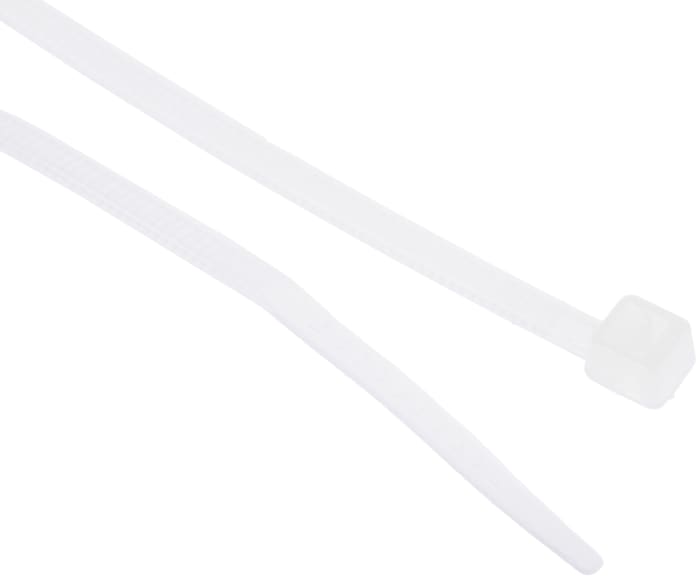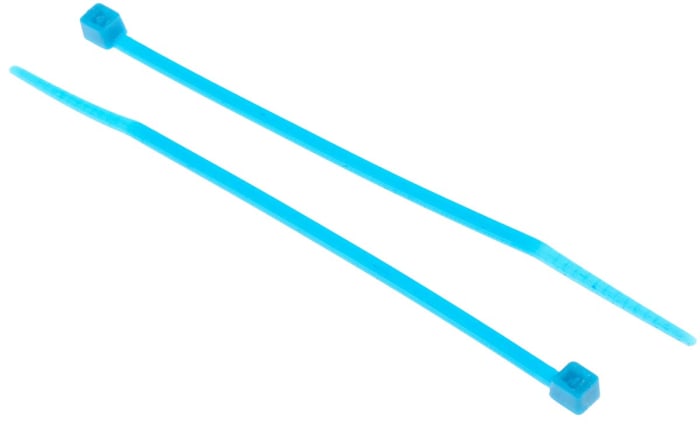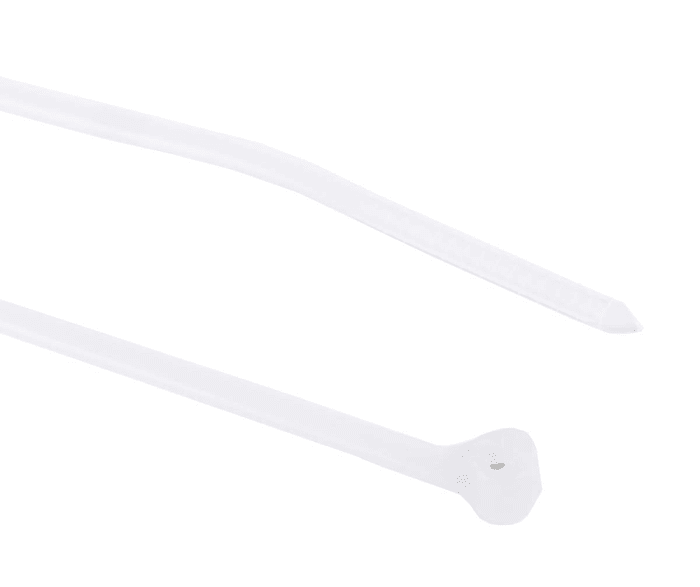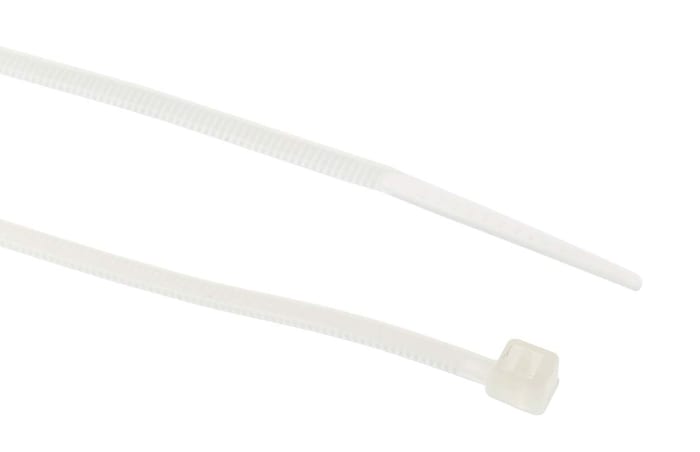Technical Document
Specifications
Brand
EssentraLength
100mm
Width
2.4 mm
Colour
Natural
Material
Nylon 66
Quantity
100
Maximum Operating Temperature
+120°C
Tensile Strength
78.4N
Maximum Bundle Diameter
25mm
Product details
RS PRO Natural Nylon Cable Tie
RS PRO cable ties are a type of fastener used for holding items together, most commonly electrical cables or wires. These cable ties are made from Nylon 66 (also known as nylon 6.6) and are a one-piece, self-locking fastener.
This nylon type is frequently used when high mechanical strength, rigidity, good stability under heat and/or chemical resistance are required. Functioning like straps to keep cables tidy, they’re available in a range of sizes and lengths.
The design of a cable tie includes a head which provides the slot for the tape to be pulled through, to make a loop. The cable can be pulled through the slot until the preferred loop is achieved and then the excess cable can be cut off.
When threaded through the slot, the teeth of the cable form a lock which can’t be pulled back through.
These standard nylon cable ties should be an essential part of every toolkit. With the RS PRO range, there are a variety of lengths, widths and sizes to suit all your requirements.
Features and Benefits:
Flame retardant
Suitable for a multitude of uses
Easy to thread
Built-in lock system to prevent accidental removal
Typical applications:
Cable ties are used as a type of fastener, for holding items together, primarily electrical cable or wire. Cable ties are cheap, easy to use and strong and because of this they can be found in many different industries for various uses:
Cable management
Home/DIY
Garden
FAQs
Can cable ties be reused?
Cable ties typically come in two varieties which are single-use and reusable. It is possible to undo a single-use cable tie without having to cut it open so it can be used again. When trying to undo a traditional cable tie, it can be quite simple. Just stick a pin or something small in the locking mechanism, press down and slide it out.
But bear in mind that single-use cable ties are designed for that purpose, so even though it’s possible to technically undo them and use them again, the plastic teeth can wear down the more they’re undone and re-tied. Also, manipulating the locking mechanism can damage it, meaning the tie develops a looser grip over time – so refrain from using old ones to tie anything that needs to be really secure.
What are the different types of cable tie?
There are many different types of cable tie, including heavy-duty metal ties, plastic ties, and Velcro cable ties in the form of a Velcro strap. Below are some of the main types:
• Standard
• Releasable
• Mounted head
• Push mount
• Self-adhesive
• Double-headed
• Stainless steel
• Reusable
Approvals
UL
Stock information temporarily unavailable.
Please check again later.
SR 23.70
1 Bag of 100 (ex VAT)
SR 27.26
1 Bag of 100 (inc. VAT)
1
SR 23.70
1 Bag of 100 (ex VAT)
SR 27.26
1 Bag of 100 (inc. VAT)
1
Technical Document
Specifications
Brand
EssentraLength
100mm
Width
2.4 mm
Colour
Natural
Material
Nylon 66
Quantity
100
Maximum Operating Temperature
+120°C
Tensile Strength
78.4N
Maximum Bundle Diameter
25mm
Product details
RS PRO Natural Nylon Cable Tie
RS PRO cable ties are a type of fastener used for holding items together, most commonly electrical cables or wires. These cable ties are made from Nylon 66 (also known as nylon 6.6) and are a one-piece, self-locking fastener.
This nylon type is frequently used when high mechanical strength, rigidity, good stability under heat and/or chemical resistance are required. Functioning like straps to keep cables tidy, they’re available in a range of sizes and lengths.
The design of a cable tie includes a head which provides the slot for the tape to be pulled through, to make a loop. The cable can be pulled through the slot until the preferred loop is achieved and then the excess cable can be cut off.
When threaded through the slot, the teeth of the cable form a lock which can’t be pulled back through.
These standard nylon cable ties should be an essential part of every toolkit. With the RS PRO range, there are a variety of lengths, widths and sizes to suit all your requirements.
Features and Benefits:
Flame retardant
Suitable for a multitude of uses
Easy to thread
Built-in lock system to prevent accidental removal
Typical applications:
Cable ties are used as a type of fastener, for holding items together, primarily electrical cable or wire. Cable ties are cheap, easy to use and strong and because of this they can be found in many different industries for various uses:
Cable management
Home/DIY
Garden
FAQs
Can cable ties be reused?
Cable ties typically come in two varieties which are single-use and reusable. It is possible to undo a single-use cable tie without having to cut it open so it can be used again. When trying to undo a traditional cable tie, it can be quite simple. Just stick a pin or something small in the locking mechanism, press down and slide it out.
But bear in mind that single-use cable ties are designed for that purpose, so even though it’s possible to technically undo them and use them again, the plastic teeth can wear down the more they’re undone and re-tied. Also, manipulating the locking mechanism can damage it, meaning the tie develops a looser grip over time – so refrain from using old ones to tie anything that needs to be really secure.
What are the different types of cable tie?
There are many different types of cable tie, including heavy-duty metal ties, plastic ties, and Velcro cable ties in the form of a Velcro strap. Below are some of the main types:
• Standard
• Releasable
• Mounted head
• Push mount
• Self-adhesive
• Double-headed
• Stainless steel
• Reusable
Approvals
UL




